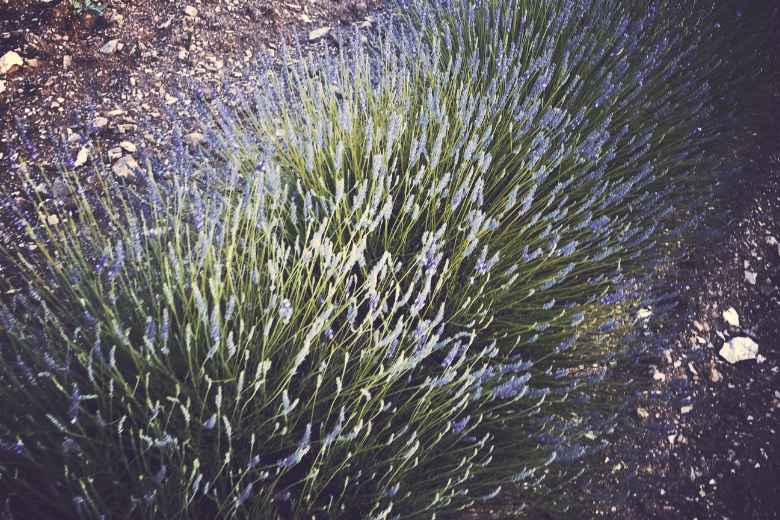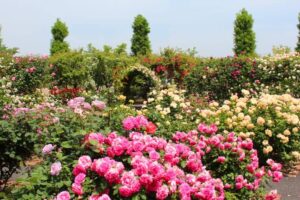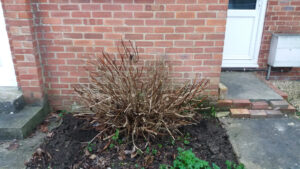
Lavender is a popular and fragrant flowering plant that is often grown in gardens for its colorful blooms. But sometimes, lavender plants don’t bloom as expected. This can be due to a number of reasons, such as too much or too little water, insufficient sunlight, improper soil balance, or the lack of essential nutrients.
By understanding what your plant needs and taking the proper steps to meet those needs, you can ensure that your lavender blooms as expected.
What Causes Lavender Not to Bloom
Lavender is a beautiful and fragrant plant that can bring a touch of elegance to any garden. Unfortunately, there are times when lavender fails to bloom. The most common reasons for this are improper care, insufficient sunlight, and lack of nutrients.
If your lavender isn’t blooming as much as you would like, start by making sure that it is planted in a sunny, well-drained spot, and that it is getting enough water and fertilizer. If the soil is not acidic enough, adding some lime to the soil may help.
Additionally, lavender can sometimes fail to bloom if it is over-pruned, so prune carefully and only when necessary. By providing the right environmental conditions, you can ensure that your lavender will be blooming for years to come.
Different Types of Lavender and Their Bloom Cycles
The sweet fragrance of lavender is a familiar scent in gardens and yards across the world. But did you know that there are many different varieties of lavender, each with its own unique bloom cycle? Lavenders are divided into two categories—English lavender and French lavender—with a range of subtypes in each.
English lavender varieties, like Munstead and Hidcote, have longer bloom cycles and thrive in cooler climates. French varieties, such as Grosso and Provence, have shorter bloom cycles and grow better in warmer climates.
Each variety of lavender has its own unique characteristics and particular needs, making it easy to find the perfect lavender for your garden. Whether you’re looking for a long-lasting bloom or a sweet scent, you can find the perfect lavender with the right knowledge and care.
Best Conditions for Lavender to Bloom
Lavender is an incredibly beautiful, fragrant flower that can bring a special touch of elegance to any garden. To get the best out of lavender, it is important to understand the conditions necessary for it to thrive.
First, lavender needs full sun and well-drained, slightly alkaline soil. It also needs regular watering, but take care not to overwater as this can cause root rot. Pruning and deadheading are also important maintenance practices to keep lavender plants healthy and blooming throughout the summer.
With the right care and attention, you can enjoy the wonderful sight and smell of lavender in its fullest glory.

Potential Diseases That Affect Lavender’s Blooms
Lavender is a beautiful and fragrant plant, but its blooms can be affected by a variety of diseases. Common diseases that can harm lavender blooms include powdery mildew, gray mold, rust, and botrytis blight.
Powdery mildew is a white powdery growth on the surface of the leaves and stems, while gray mold is a grayish mold growth on the plant. Rust causes yellow or orange spots on the leaves, and botrytis blight is a grayish-brown discoloration of the leaves.
Lavender blooms can also be affected by extreme weather conditions such as frost, heat, and drought. To protect your lavender blooms, make sure to provide adequate drainage and proper pruning, and use mulch to protect the roots from temperature changes.
Additionally, water your lavender plants deeply and regularly to prevent drought stress. With proper care, you can ensure that your lavender blooms remain healthy and vibrant.
Preparing Lavender for the Best Blooming Results
Lavender is an aromatic herb that can bring a burst of fragrance to any outdoor garden or indoor container.
To ensure the best blooming results, it’s important to prepare the lavender plants properly. Start by choosing a sunny location that has well-drained soil. T
hen, when planting, ensure that the roots are covered completely. Lavender prefers a slightly alkaline soil, so consider adding lime to the soil before planting. After planting, water the lavender regularly, but do not over-water.
Lavender also benefits from regular trimming to promote fuller blooms. With the right preparation and care, your lavender plants will be sure to give you the most beautiful and fragrant blooms!
Troubleshooting Techniques for a Lavender That Is Not Blooming
Troubleshooting Techniques for a Lavender That Is Not Blooming is a blog post that provides practical tips for diagnosing and resolving issues that may be preventing your lavender from blooming.
We provide detailed steps to identify possible causes, from inadequate sunlight and water to pests and diseases, as well as how to address each of them.
We also suggest some simple maintenance techniques to keep your lavender in top condition. This post is a must-read for anyone looking to get their lavender blooming again!
FAQs About the Why Is My Lavender Not Blooming
1. Why isn’t my lavender producing flowers?
Answer: Lavender needs full sun and well-drained soil to produce flowers. If your lavender is in partial shade or in soil that is too wet, it won’t bloom. Additionally, if the plant is over-fertilized, it may not produce flowers.
2. How much water does my lavender need?
Answer: Lavender needs well-drained soil and regular watering. For established plants, water deeply and infrequently, allowing the soil to dry out between waterings. Avoid overwatering, as this can cause root rot and prevent blooming.
3. What type of fertilizer should I use?
Answer: Lavender is a low-maintenance plant and does not require fertilizer. If you do choose to fertilize, use a low-nitrogen fertilizer such as an all-purpose 10-10-10 fertilizer. Apply only a few times a year and follow the instructions on the label.
Conclusion
Many factors can contribute to why a lavender plant is not blooming, such as lack of sunlight, too much water, incorrect soil pH, and insufficient nutrients. Understanding the needs of your lavender plant and providing the right conditions is key to getting your lavender to bloom. With proper care and attention, you should be able to enjoy the beautiful purple blooms of your lavender plant in no time.







